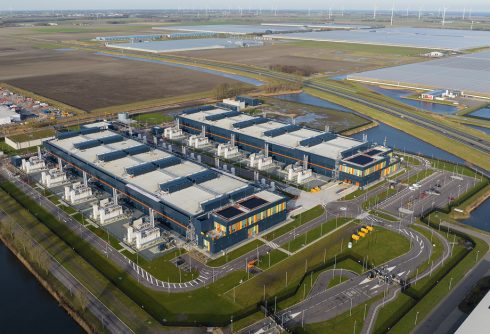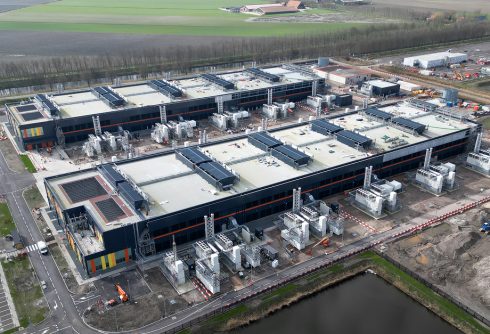The transformer supply chain is under immense strain, exacerbating delays, cost surges, and procurement risks for utilities, data centers, and renewable energy developers. In our previous article, The Transformer Supply Crisis: Overcoming Power Transformer Shortages, we explored how rising demand, material shortages, and regulatory pressures have created industry-wide bottlenecks. However, these challenges are compounded by supply chain inefficiencies that further prolong project timelines and escalate costs.
A recent report by the U.S. Department of Energy highlighted that transformer lead times have reached unprecedented levels, with some large power transformers now requiring over 200 weeks (nearly four years) for delivery. This prolonged wait time threatens critical infrastructure projects, delaying grid expansions and increasing overall costs. Additionally, the National Association of Regulatory Utility Commissioners (NARUC) has warned that supply chain bottlenecks could result in higher energy costs for consumers due to the lack of timely infrastructure upgrades.
To effectively navigate these supply chain challenges, energy leaders must adopt proactive strategies that enhance supplier diversification, mitigate geopolitical risks, and optimize inventory management. Here we take a closer look at the weaknesses within the transformer supply chain and offer some solutions to build resilience in transformer procurement and manufacturing.
Challenges Disrupting the Transformer Supply Chain
The transformer supply chain is under immense pressure due to a combination of rising demand, supply bottlenecks, and external economic factors. Energy providers and utilities face increasing difficulties in securing essential transformers as manufacturing struggles to keep pace. Lead times have surged, with some large power transformers taking over four years to procure, delaying critical grid expansion projects.
One of the primary drivers of this crisis is the shortage of key raw materials, such as grain-oriented electrical steel (GOES) and copper, both of which are crucial for transformer production. These shortages have led to rising costs, which, coupled with increased regulatory compliance requirements, have made transformer procurement more challenging than ever.
Additionally, geopolitical tensions and global trade restrictions have further strained supply chains. Many manufacturers rely on international suppliers for essential components, making them vulnerable to disruptions caused by trade policies, tariffs, and export bans. As a result, the energy sector must adopt strategic approaches to mitigate these supply chain disruptions and ensure long-term stability in transformer procurement.
Strategies to Strengthen the Transformer Supply Chain
The transformer supply chain has become increasingly fragile due to reliance on limited suppliers, geopolitical risks, and fluctuating material availability. Establishing a resilient supplier network is crucial to mitigating disruptions and ensuring steady production. Companies should pursue a balanced mix of global and local sourcing strategies to diversify risks while maintaining cost efficiencies.
A key approach is to establish long-term contracts with multiple suppliers in different regions. By spreading procurement across various geographic locations, companies can reduce vulnerabilities caused by trade restrictions, political instability, or localized supply chain disruptions. Additionally, vetting suppliers for reliability, financial stability, and adherence to industry standards ensures that procurement decisions align with long-term business goals.
Organizations should also invest in collaborative partnerships with key suppliers, enabling better demand forecasting and streamlined logistics. By fostering transparent communication and developing contingency plans with suppliers, energy companies can navigate unexpected delays and shortages more effectively, ultimately strengthening the entire transformer supply chain.
Lessons from Supply Chain Adaptation
The transformer supply chain crisis has forced utilities, data centers, and energy providers to rethink their procurement strategies. By analyzing past challenges and successful adaptations, companies can better prepare for future disruptions. Several organizations have adopted proactive measures, such as diversifying suppliers, implementing advanced inventory management techniques, and leveraging new technologies to improve procurement efficiency.
One major trend among energy providers is the shift toward regional supply chain diversification. Rather than relying solely on a single manufacturer or country, companies are forming partnerships across multiple regions to mitigate geopolitical and logistical risks. Similarly, investing in predictive analytics and real-time tracking tools has allowed companies to anticipate supply chain disruptions and adjust procurement strategies accordingly.
Furthermore, energy companies are increasing collaboration with policymakers to advocate for regulatory adjustments that facilitate faster approvals for transformer production and deployment. A combination of strategic planning, supplier partnerships, and technology adoption is essential for maintaining a stable and resilient transformer supply chain.
The Future of Transformer Supply Chain Management
As the energy sector evolves, the transformer supply chain must adapt to new challenges and opportunities. The push for decarbonization, advancements in predictive maintenance, and shifting trade policies are reshaping how manufacturers, utilities, and procurement teams approach transformer sourcing and deployment. Companies that proactively invest in forward-looking strategies will be better positioned to navigate supply chain disruptions and remain competitive.
A key trend driving the future of transformer supply chains is the increased adoption of eco-friendly transformers that align with sustainability goals. Governments and regulatory bodies are mandating higher efficiency standards, prompting manufacturers to explore alternative materials and designs. Additionally, digital twins and predictive maintenance technologies are enhancing operational efficiency by enabling real-time monitoring and proactive maintenance scheduling, reducing downtime and costly repairs.
On the policy front, governments worldwide are implementing new incentives for domestic transformer production, aiming to reduce reliance on foreign manufacturing and improve supply chain resilience. Industry stakeholders must stay informed about these regulatory shifts and leverage opportunities for government-backed investment and collaboration. By embracing these trends, energy companies can secure a more stable and sustainable transformer supply chain for the future.
Securing a Resilient Transformer Supply Chain
The challenges in the transformer supply chain underscore the need for proactive planning and strategic investment. Extended lead times, rising costs, material shortages, and regulatory pressures have placed immense strain on utilities, data centers, and manufacturers. However, companies that implement supplier diversification, leverage advanced inventory management, and invest in technological innovations will be better equipped to navigate these disruptions.
Strengthening partnerships with key suppliers and advocating for domestic manufacturing incentives can help create a more stable and reliable transformer procurement landscape. Additionally, embracing digital advancements such as predictive maintenance and real-time supply chain analytics will enable organizations to anticipate disruptions before they occur, minimizing project delays and cost overruns.
By adopting these strategies, industry stakeholders can ensure long-term supply chain resilience, allowing for more sustainable energy infrastructure development. Now is the time for decision-makers to take action, securing their supply chains to meet future energy demands efficiently.
Learn More
Northfield fosters continuous innovation to transform the energy infrastructure industry by providing unrivaled, end-to-end global procurement, logistics, and production management for energy components. At Northfield, we leverage our distinguished capabilities in global procurement, logistics and production management to rapidly supply mission-critical, high-quality energy infrastructure equipment across the globe.
References
1. U.S. Department of Energy. (2024). Large Power Transformer Resilience Report, p. 15. URL, Retrieved January 30, 2025.
2. National Association of Regulatory Utility Commissioners (NARUC). (2024). Energy Resilience Reference Guide, p. 22. URL. Retrieved January 30, 2025.









